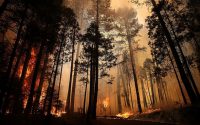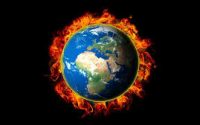Do We Actually Know the Risk?
By Olivia Chatowsky, September 23, 2019
When we think of risk, in its traditional sense it may seem pretty simple to determine what is a risk and what is not. Cheating on a test or cliff jumping are absolutely high-risk choices—but these two situations only impact the person who chooses to carry them out. Complications arise when there is more than one party who feels the impact of a situation, which impacts the overall risk, specifically environmental risk. For example, Bob Wyss explains that risk is calculated based on the type of hazard that causes harm, the quantity needed to cause harm, and how much exposure of the hazard people would even experience (2019, 38). We see the example of risk when comparing melanoma to food poisoning. While a great deal more people in America have suffered food poisoning, this is temporary and very rarely fatal. On the other hand, melanoma affects far fewer people, but the effects can kill thousands per year (Wyss 2019, 38). Thus, the risk of melanoma is higher than that of food poisoning since it has worse of an impact on those who are diagnosed.
In his article, “Firestorm”, Douglas Fox explains the developing study of fires and their risks as we understand more of the chemical and mechanical dynamics of large fires that result in firestorms. A firestorm occurs when a wildfire is magnified by severe drought, heat, and fire suppression, and takes in more oxygen, fueling sudden bursts of uncontrollable and violent activity (Fox 2018). While the predictability of firestorms is still being studied, Fox explains the risks in a series of case studies, anecdotes, and historical references. When it comes to communicating risks, those in charge must take into account many factors of how the risks will be internalized and valued, based on many standards relating to science as well as psychology, culture, and ideology (Wyss 2019, 42). Presenting risk in the right way can help people properly assess and prioritize it.
In one instance, Fox communicates the dangers of firestorms in the instance of a 1943 bombing in Hamburg, Germany by British forces. In this example, he uses the catastrophic factor mentioned by Wyss in that the perceived risk of the incident is great, even though the occasion of the event is less likely (Wyss 2019, 45) and in this case, bombings are rare but the impacts were horrendous, resulting in the deaths of many innocent families including babies and the elderly (Fox 2018).
Fox also communicates risk using the “uncertainty” aspect, in that if there is less information about a risk, the more likely people are to assume the worst (Wyss 2019, 45). That is, when the public isn’t presented with the facts and details of the risk, it is more intimidating since there are so many unknowns. This is the case with the South Canyon Fire which started out unthreateningly at first but resulted in the deaths of 12 firefighters. The most chilling part of the story is how the bodies of the crew that had died were found strung along the path with backpacks still on, as if the same invisible force had taken their lives simultaneously (Fox 2018). Their deaths are still a mystery, and others like it have left not survivors to explain. These deaths result when even modern fire tracking technologies fail to predict sudden bursts of energy and flame from a large mass of fire—a ‘finger of death’ (Fox 2018). The risk is more threatening since we don’t know exactly how these “fingers of death” are caused even after several modern studies.
According to an overview from the United States Environmental Protection Agency, the purpose of risk communication serves to help residents of affected communities understand the risks as well as its assessment and management. It also should form scientific perceptions of any hazards and aid in decision making of how risk should be addressed (EPA 2018). Fox succeeds in explaining the risks of firestorms as well as those who are affected, explaining how they can occur anywhere that large fires break out (Fox 2018). He does not, however, offer any advice after the uncertainty of the studies on how to address the issue. The risk of firestorms is rather clear—he effectively communicates risk by putting it in context and comparing other risks (EPA 2018), but Fox was not able to provide advice for risk reduction. While risk communication is crucial for expressing the facts and threats behind a situation, it is also important to include a way to address it and encourage a dialogue with the affected community.
Works Cited
EPA. 2018.
Risk Communication. <https://www.epa.gov/risk/risk-communication>
Accessed September 23, 2019.
Fox, D. 2018. Firestorm. Pages 99-113 in S. Kean, editor. The Best American Science and Nature Writing. Houghton Mifflin Harcourt, New York, USA.
Wyss, B. 2019. Covering the Environment How Journalists Work the Green Beat. 2nd Edition. Routledge, New York, NY, USA.

